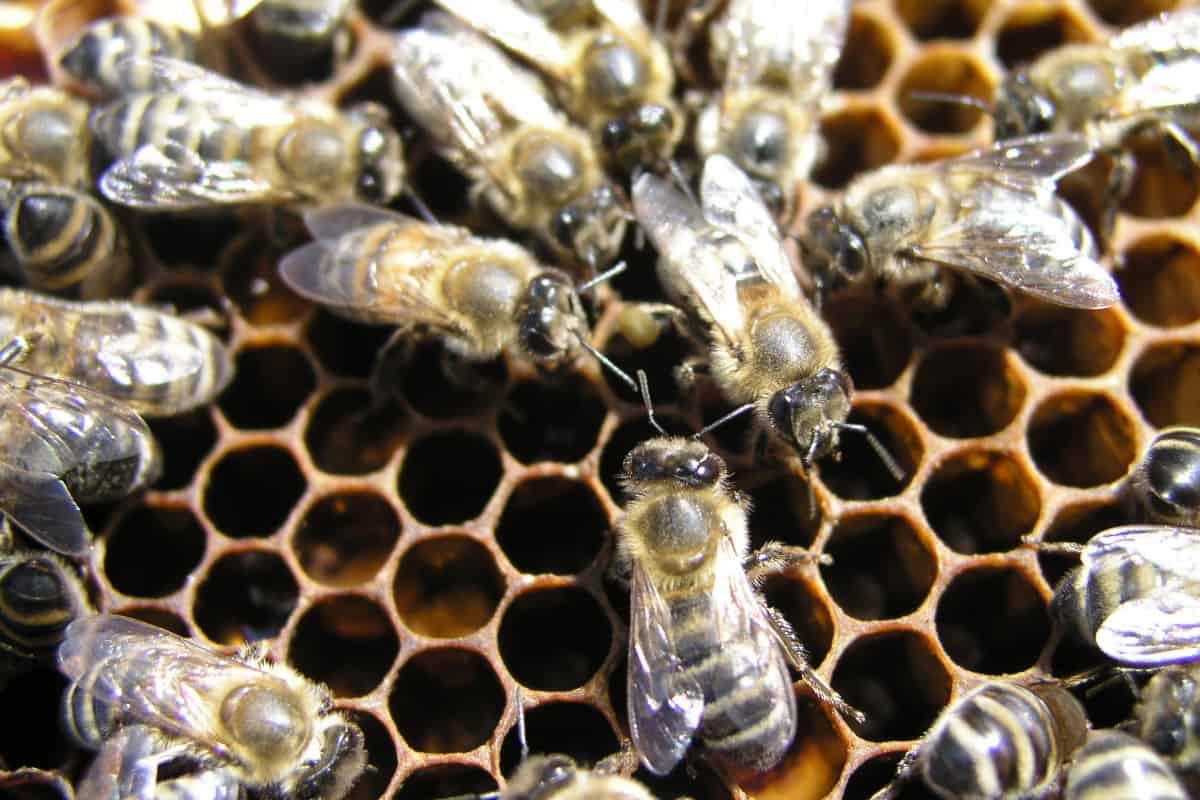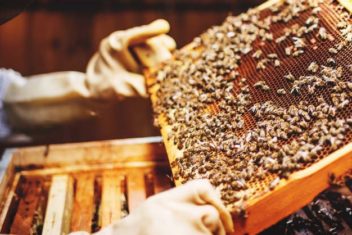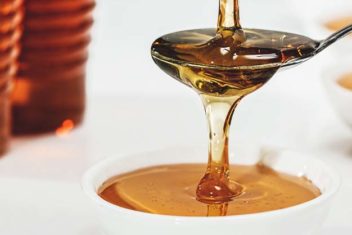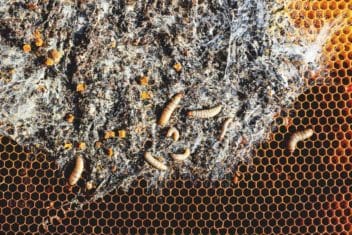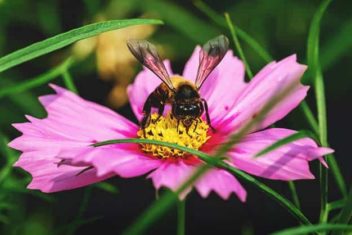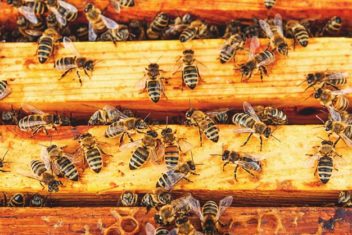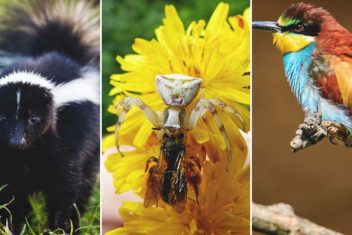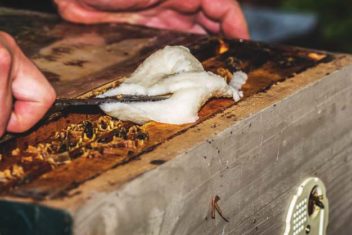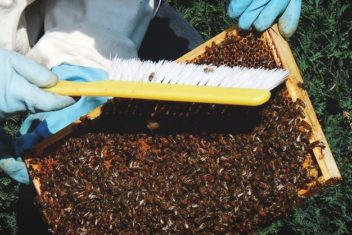Raising bees for honey can be extremely challenging – and extremely frustrating, especially if you don’t really know what you are doing.
We raised bees for several years here on my farm, and over time, had to give up on the pursuit because we kept losing our hives to the harsh winters (that’s another story).
In those years, we got really good at determining when our hive was queenless.
It happened to us fairly frequently, and fortunately, we had a good friend who helped us out and gave us advice when she needed to be replaced.
Many people think that the loss of a queen indicates the total demise of a hive. However, one does not have to lead to the other.
In fact, you can come back when you have a queenless hive – as long as you can identify the loss of a queen quickly and take steps to remedy the situation.
Signs Your Hive is Queenless
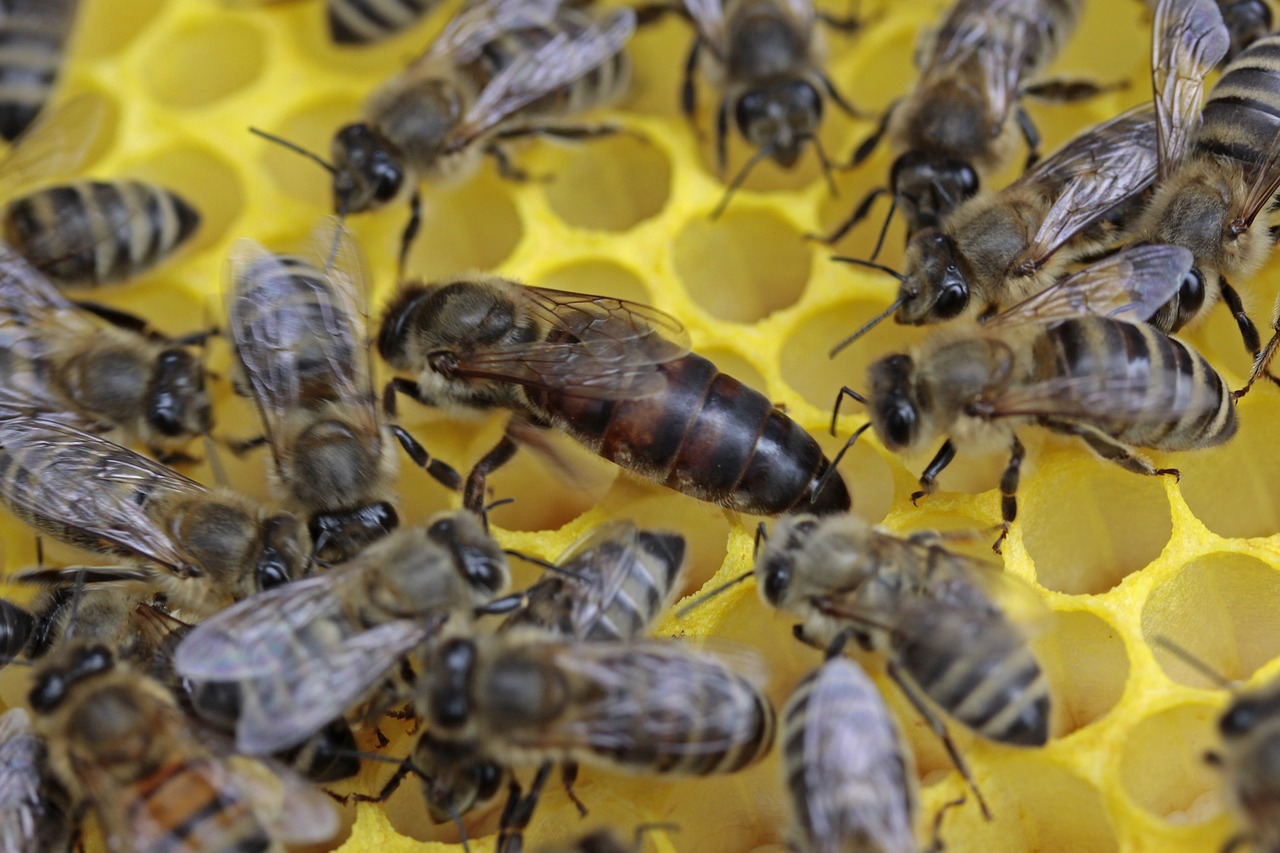
1. Lack of Eggs
The first and most obvious sign of a queenless hive is that you don’t have any eggs or brood. The queen’s job is to lay fertilized worker bee eggs – in fact, she is the only one that can perform this task.
Therefore, there’s no mistaking it – if you don’t see any eggs or brood, there’s a good chance you have a queenless hive. Always check for eggs. If you are able to identify a lack of eggs and brood early on, you can often fix the situation before too much harm has been done.
One important caveat to this, though – there’s a chance that you have no eggs or brood and still have a queen. She might not be fertile anymore or she could be taking a break. Brood breaks are a technique that bees use to naturally control the spread of various brood diseases and problems like varroa mite infestations.
If that’s the case, there’s not much you need to do (or should do). The queen will resume laying as soon as the disease has resolved itself.
2. Lower Population
Every day, bees die. It’s just a fact of life. It doesn’t necessarily indicate that you are doing anything wrong. However, the problem is that in a queenless hive, those fallen bees simply can’t be replaced (even if they’ve died of natural causes).
Unfortunately, it can take quite some time for your hive populations to drop enough for you to notice them. This means that by the time you recognize that your hive is queenless, it might be too late for you to do anything.
3. Increased Honey
With no brood to care for, worker bees who were once responsible for this task will be out of a job. Therefore, you may notice increased honey stores as more bees occupy themselves with tasks like foraging.
It’s important to note that this “symptom” can appear in hives with queens, too. For example, when there is a strong flow of nectar and the colony simply needs more room, bees will put storing food at the top of their priority list.
4. Empty Queen Cells
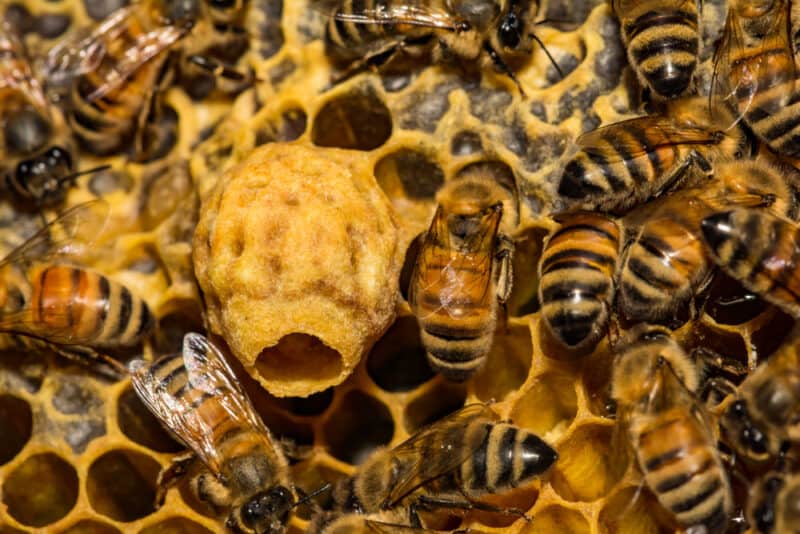
In some cases, an enterprising queenless bunch will decide to make its own replacement queen. If you notice queen cells without the presence of a queen, that’s a good sign that your queen is no longer around.
What does a queen cell look like? It looks a lot like the edge of a recently opened tin can with no larvae inside. If you see the hatched queen cells but no other sign of a queen, you might have a so-called “virgin queen” who has not yet started to lay. Virgin queens can be hard to identify but are generally much smaller than actual queens.
5. Laying Workers
Though unusual, a hive that has been queenless for quite some time may eventually develop some laying workers. Worker bees are female so they can lay eggs, but their eggs will not be fertilized like those of a queen. They never went out to mate!
Interestingly, these unfertilized eggs will develop fully and ultimately hatch. However, they become drones.
This is perhaps one of the most challenging signs of a queenless hive to deal with because it can be hard to right a colony once it’s occurred. Even if you’re able to introduce a queen, there’s a chance that the colony will reject her.
6. Other Behaviors
You might notice that the overall demeanor of your hive shifts. Your bees might become more aggressive or even just more nervous, as a whole. You might hear new or unusual sounds coming from your hive, like a dull roar or even a higher-pitched whine.
Some queenless hives will walk near the entrance to the hive and spread their wings in different ways prior to heading out to forage for food, too.
What Causes a Hive to Become Queenless?
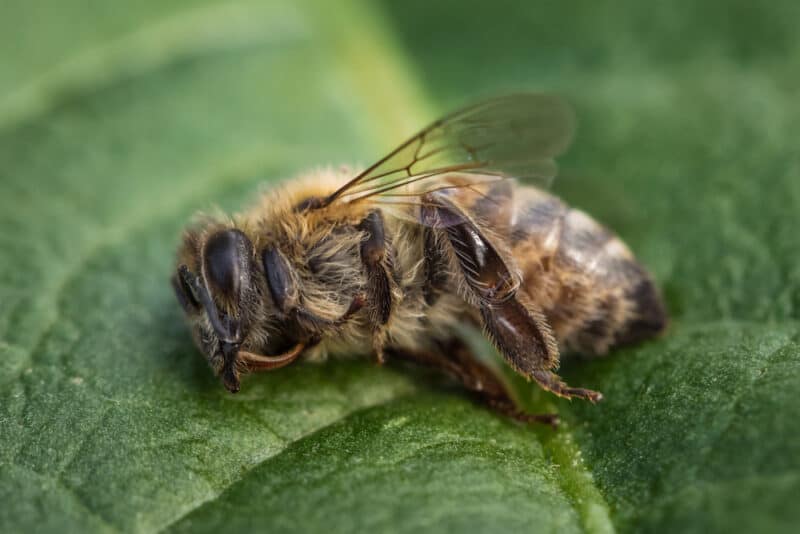
Just like any other creature, honey bee queens can and ultimately always do die. There are several causes behind queen bee deaths but the most common include disease, predator attack, and beekeeper error.
While some of these can be prevented, in many cases, a queen bee dies simply because she has met her natural demise. Death from old age does happen!
How Long Can a Hive Be Queenless?
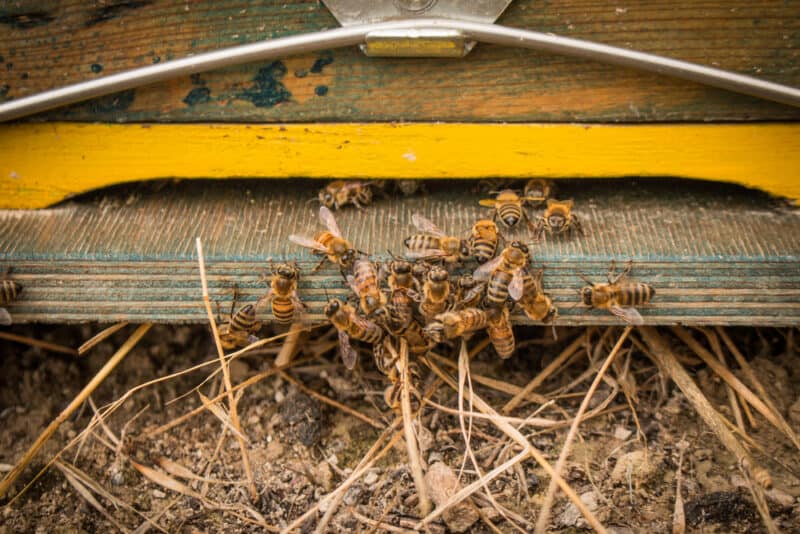
If you’ve stumbled upon this article after realizing your hive is without a queen, you might be wondering how long it can be queenless. The answer varies depending on how the queen died and how long you think it may have been between the time when the queen died and when you first noticed.
If your queen died of old age, for instance, you don’t have very long – often, old queens run out of sperm, so the final eggs that were laid were unfertilized.
On the other hand, if you know exactly how your queen died – like if you accidentally crushed her – then you have more time on your hands. Your hive can probably be queenless for a month or so while things are getting righted.
What to Do When You Are Without a Queen
1. Check for Queenlessness – and Double and Triple Check!
If you’re not 100% sure that your hive is queenless, double and triple-check before taking any steps to rectify the situation. You don’t want to inadvertently destroy a productive hive.
The best way to test for queenlessness is to provide your bees with a frame of open brood from another colony. Wait a few days, then see if the bees are trying to create emergency queens on the frame. The emergency queen cells indicate the presence of a queenless hive.
Another method is to simply set a caged queen atop the frames. Watch the bees. If they fly toward the queen, quickly moving their wings, there’s a good chance that the hive is queenless. If, however, the bees react aggressively, your hive is likely queenright.
2. Give a Frame of Young, Open Brood (or Eggs From Another Hive)
By providing your bees with a frame of young, open brood or eggs from another hive, you can allow them to make their own queen. This takes a long time, so it’s not an advisable strategy if you think it’s been some time since your hive last had a queen.
It takes 3 weeks for a fertilized egg to become a worker bee. Again, I would not recommend this method if you think it’s been some time without a queen. Every day that passes spells the death of more bees that are not being replaced. This strategy might be more difficult during the winter and fall months, too.
However, there are a few advantages to this strategy. For starters, a queen that has been bred naturally will have wilder, more feral genes – your colony will be stronger and healthier as a result. It will also preserve the genetic diversity of your colony. This solution also costs no money and less intervention on your part. Sometimes it can be difficult to source queens, too, so this might very well be your only option.
3. Buy and Install a Queen
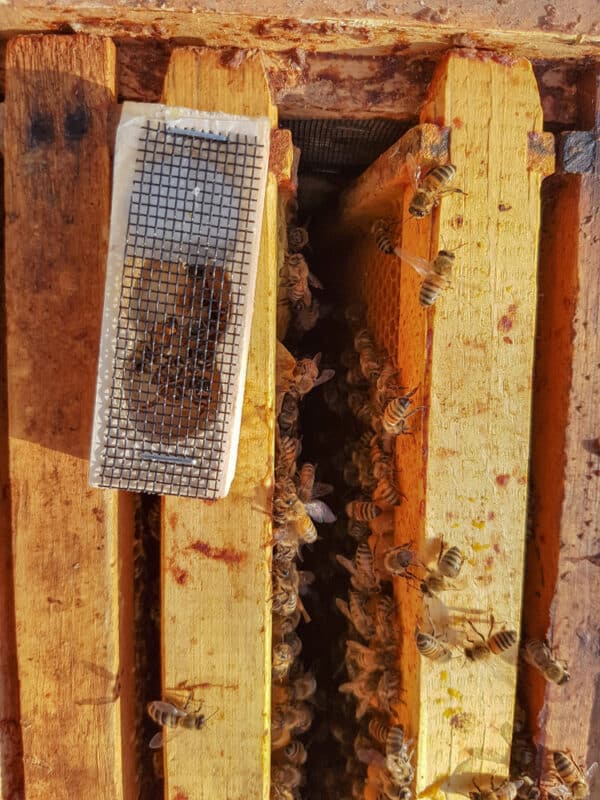
Buying and installing a queen is one of the easiest ways to get your colony righted. While you can also allow the bees to make their own queen from a young breed in another queenright colony, buying a queen is much faster.
Installing a new queen is much faster and will get your hive queenright almost immediately. Remember, the longer your hive functions without a queen, the higher the chance that your workers will start to lay – and the greater the impact on the hive.
You can buy a queen for just $20 or $30 or so plus added expenses for overnight shipping. You’ll put the bee into the hive in a cage so that she will be protected while the colony gets acclimated to her. It generally takes up to a week for the queen to start laying eggs once she’s been introduced.
4. Combine the Queenless Hive with a Nuc
You can also combine your queenless hive with a nuc, or “nucleus colony.” This can be difficult, particularly if your queenless hive has adopted some aggressive behaviors in the absence of a queen. Plus, you’ll need to dedicate some time so that the colony can get used to the queen’s smell.
If you choose this option, you’ll have to install a mesh between the two as you’re getting started. Once all the bees are accustomed to the scent of the queen, you can remove the barrier.
5. Start a New Colony
You might not want to hear this, but sometimes the best solution is to cut your losses and start over. Often all of this work is not worth the effort it takes to get a colony queenright. Especially if your workers have already started to lay, starting a fresh colony might be your best bet. Just harvest the honey from your hive, pass it to another colony, and start afresh.
The Takeaway
If you’ve noticed that your hive is suddenly queenless, don’t panic. Take some time to calmly evaluate your situation. Then, determine which of these solutions will be the best remedy for you. Often, you’ll be able to get your colony queenright in no time!
